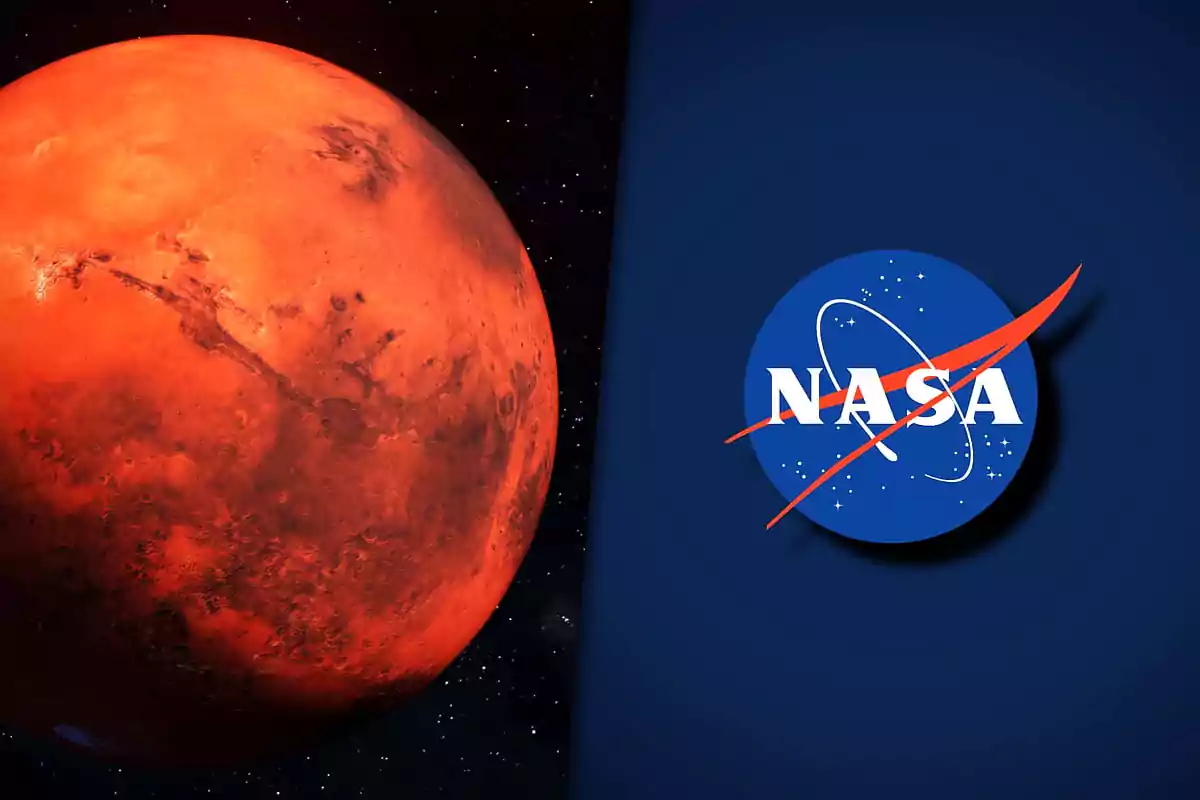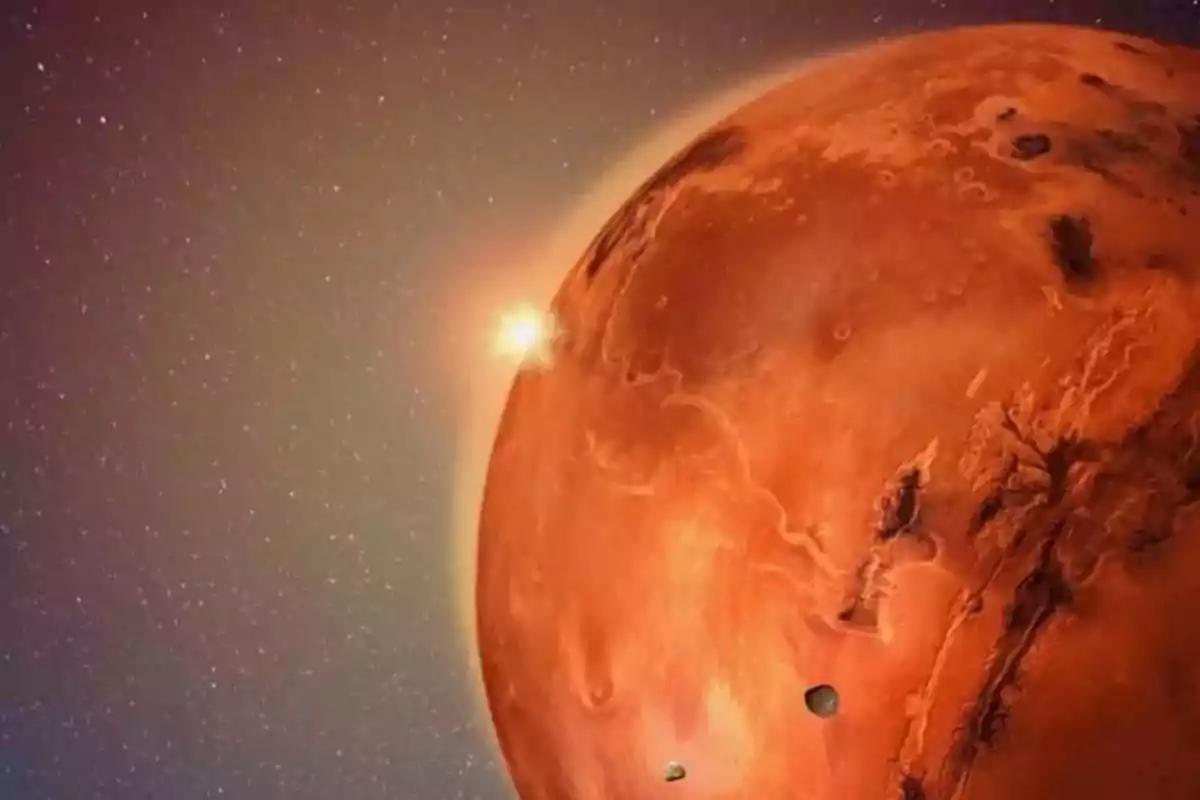
Mars: NASA managed to capture a major historic discovery
An ice cloud covered Arsia Mons and revealed key data about the Martian climate and future human missions
NASA captured a new image of Arsia Mons, one of the largest volcanoes on Mars, covered by a dense mist of water ice clouds.
The photograph, taken by the Mars Odyssey probe before dawn on May 2, shows how the Martian climate changes with the seasons and provides key clues for future missions.

What does the image taken by NASA show?
The THEMIS camera on Mars Odyssey recorded a unique scene: a green haze covering the summit of Arsia Mons during the aphelion season.
This phenomenon occurs when Mars is at the farthest point in its orbit, and the air cools as it rises up the volcanic slopes. This generates icy clouds that envelop the landscape like an ancient veil.
A structure that helps to understand Mars's climate
Arsia Mons is part of the Tharsis volcano system and rises about 20 kilometers (12.4 miles) above the Martian surface. According to NASA, it is the cloudiest in the region, which suggests more intense atmospheric activity.

Recording these clouds helps to study seasonal changes and understand how the atmosphere behaves at different times of the year. That information is key for planning crewed missions.
Why is this image so important?
- It was taken during a rare maneuver: the probe rotated 90 degrees to capture the Martian horizon.
- It is one of the first times that the upper layers of clouds and dust have been observed from that perspective.
For scientists, this technique allows them to see Mars as an astronaut would from space. That changes everything: now it is possible to study phenomena that previously went unnoticed.

The THEMIS camera and its key role in the mission
The THEMIS camera, created by Arizona State University, makes it possible to capture visible and infrared images. It helps to detect underground water deposits and to understand the planet's surface and atmosphere.
Additionally, THEMIS began to study the Martian moons, Phobos and Deimos, providing new data about their composition.
A change in Mars Odyssey's priorities
Since 2023, the Mars Odyssey mission has focused on the Martian atmosphere instead of only geology. The goal is to better understand how clouds and dust storms influence the arrival of future missions.

“Understanding the behavior of these clouds is key to designing entry and descent systems” explained Michael D. Smith, scientist at NASA's Goddard Center.
The aphelion cloud belt
The image also shows the so-called aphelion cloud belt, a formation that appears near the equator during winter in the northern hemisphere.
For scientists, this formation acts as a visual indicator of the climate, and its behavior provides information that current models are still trying to interpret.
More posts: